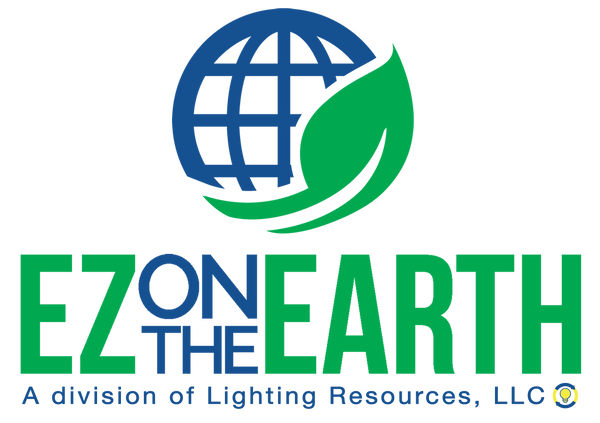To recycle or not to recycle? That is the question for many business owners.
Not only is it important to take responsibility for our footprint on the planet by recycling our waste, but in fact, toxic waste material disposal is regulated by the U.S. Environmental Protection Agency (EPA). Many states and local municipalities also have their own regulations. Companies are legally required to be aware of and comply with waste disposal guidelines.
So how do you know what should be recycled? Here are 8 common (and often toxic) materials that you should be disposing of properly.
Fluorescent Bulbs:
Did you know that all fluorescent bulbs contain mercury? Fluorescent bulbs and gymnasium style bulbs (often called HID bulbs), commonly used for overhead lighting in commercial facilities, require trace amounts of mercury to produce visible light. The mercury in fluorescent and HID bulbs is toxic and must be disposed of properly. For most businesses, burnt-out mercury-containing bulbs are regulated as a Universal Waste by the federal government and may only be stored one year before they must be shipped to a permitted facility for recycling.
Batteries
Batteries contain a range of toxic materials including mercury, silver, nickel, cadmium, silver, and lithium, and are generally regulated as Universal Waste by the federal government, which is a category of common hazardous waste. Batteries should be collected, recycled and processed so they don’t leach toxic material into waste sites and landfills, which could eventually reach our drinking water. All types of batteries should be recycled including:
- Lithium
- Alkaline
- Nickel metal hydride
- Nickel cadmium
- Zinc carbon
- Lead acid
For most businesses, batteries that meet the definition of Universal Waste may only be stored for a year before they must be sent to a permitted facility for recycling. For many types of batteries, the terminals must be fully insulated to ensure they don’t spark, so check with your recycler to ensure you properly insulate battery terminals with non-conductive tape before sending them back.
Electronics
There are a significant number of electronic devices that are manufactured that may contain toxic materials and components including lead, copper, zinc, chromium, cadmium, and mercury. Most electronic devices you can think of–computers, laptops, printers, automotive electronics, L.E.D lights, phones, computer accessories like a keyboard or mouse, cables, and TVs–should be properly recycled.
Radioactive Exit Signs
Some exit signs found in businesses and schools are manufactured with a radioactive gas that allows them to glow in the dark without the need for external power. This radioactive gas is called tritium and these signs need to be properly disposed of after they have reached their expiration date to avoid contamination and extensive cleanup.
Tritium exit signs are regulated by the Nuclear Regulatory Commission (NRC) and must be shipped to a properly-licensed facility to recycle the radioactive material. These signs are easy to identify by the red radioactive symbol on the yellow label of the sign. This label also contains the expiration date. Once the signs are properly disposed of, a letter will need to be mailed to the NRC and appropriate state agency identifying that the signs were recycled.
Tritium exit signs are only managed via our EZ on the Earth mail-back program.
Thermometers and Thermostats
Many older thermometers, thermostats, barometers, medical devices, and switches are commonly manufactured with toxic mercury and need to be properly disposed of to prevent contamination. These devices are also regulated as a Universal Waste by the federal government.
Smoke Detectors
Many commercial and residential ionization smoke alarms include a chamber that holds a radioactive material called Americium 241, which will be indicated on the packaging or the bottom of the smoke detector. Smoke detectors containing Americium 241 need to be properly disposed and recycled. Another type of smoke alarm called photoelectric should also be handled by a commercial recycling facility, because they often contain electronic circuit boards or batteries. Smoke detectors are only managed via out EZ on the Earth mail-back program.
Automotive Airbags and Seatbelt Pretensioners
Automotive airbags and seatbelt pretensioners contain a small charge and need to be properly shipped for proper deployment and reclamation. Deployment and reclamation categories vary depending on if they are off-spec, have been used, or recalled. It is important to check with Lighting Resources before shipping any automotive airbags.
Light Bulb Ballasts
Light bulb ballasts, which is the device that regulates and provides sufficient voltage to a lamp, contain heavy metals and dielectric fluids that should be kept out of the environment. Ballasts manufactured prior to 1979 contain polychlorinated biphenyls (PCBs), which are considered potentially carcinogenic and must be very carefully managed and incinerated. In most cases, ballasts manufactured after 1979 will state “no PCBs” on the bottom of the ballast. In either case, it is best to consult with a company experienced in managing and recycling spent light ballasts.
Want to find out where to send recycling?
Read more about Lighting Resources and EZ on the Earth’s recycling kits, which make it easy to manage a variety of material that needs to be recycled.

